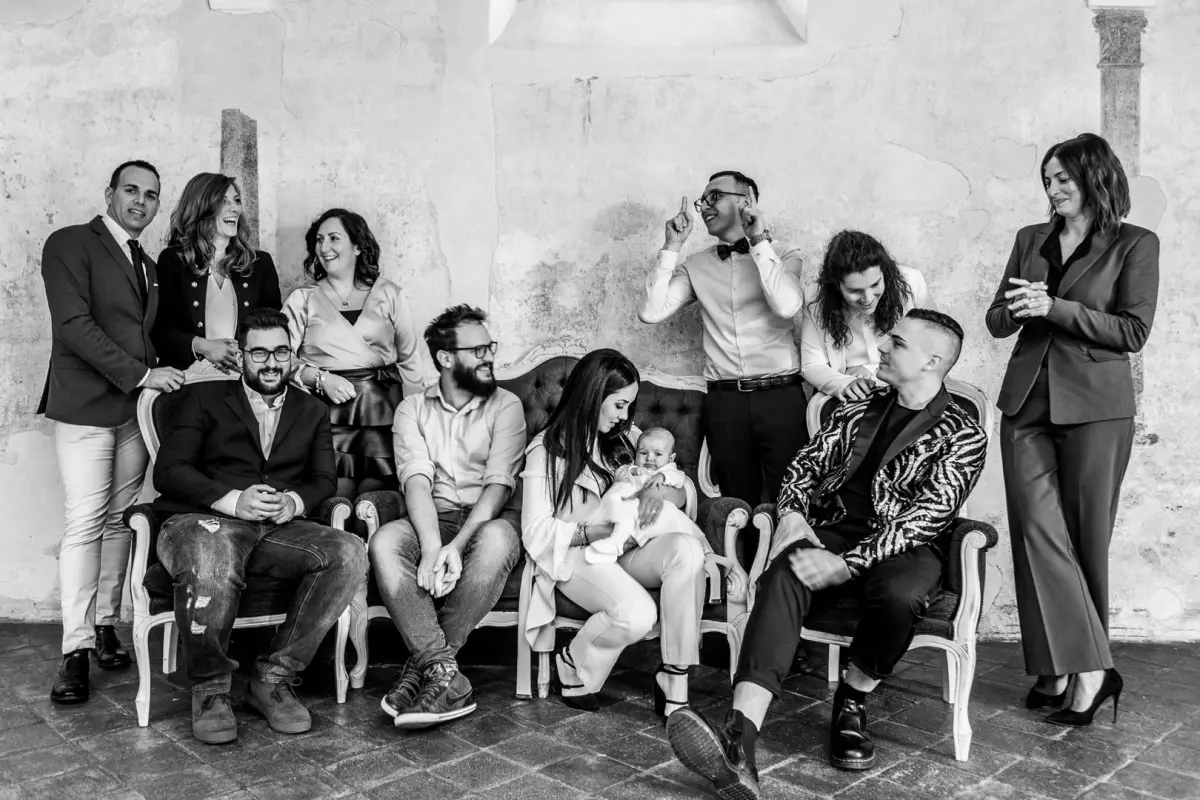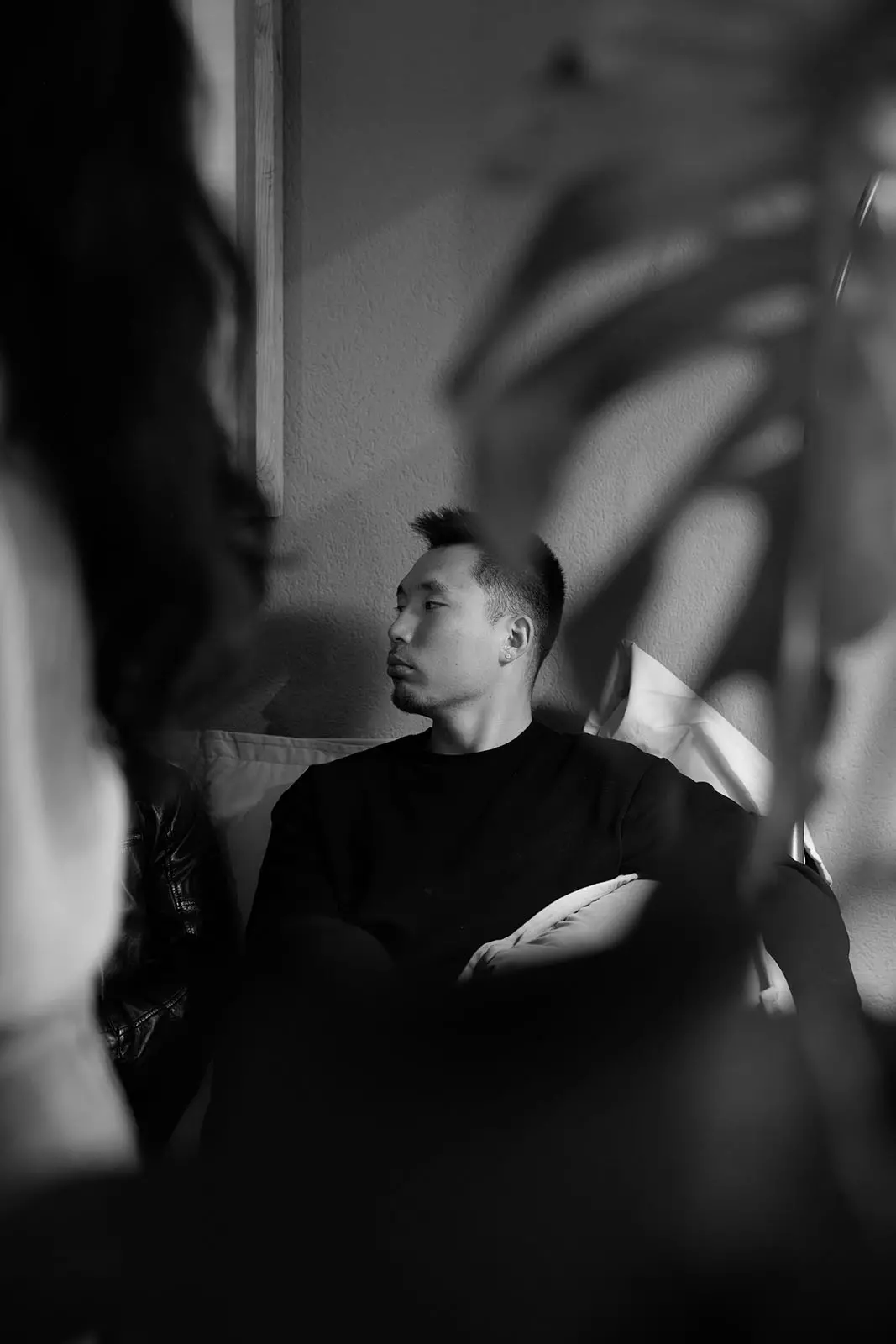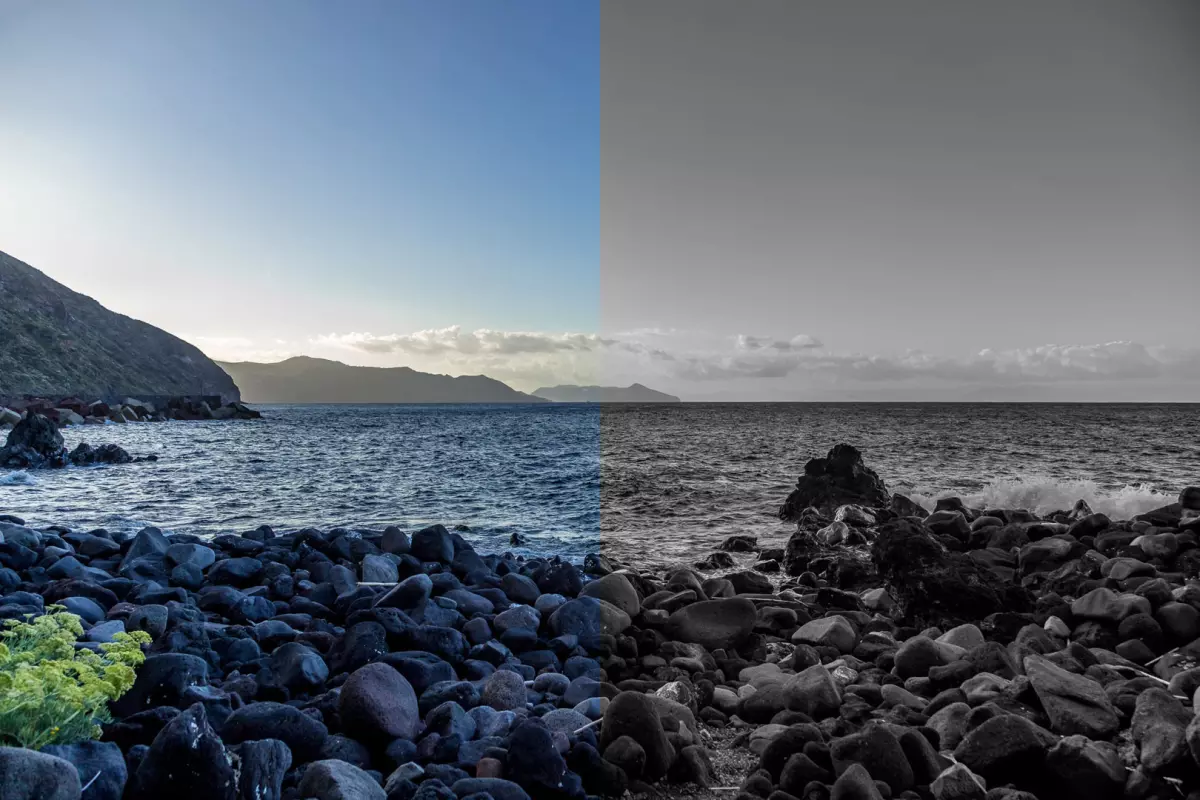
Your right to your personal image in Switzerland: What you actually need to know.
Everyone's a photographer these days. Smartphones everywhere, social media constantly hungry for con...
What if I told you I shoot entirely in black and white, then convert to colour later? Not for artistic reasons, but because I'm colourblind. Here's how a visual limitation became a workflow that makes me a better photographer, and why sometimes seeing less helps you capture more.

If you've ever watched me work, you might have noticed something odd: my camera viewfinder shows everything in black and white. Not because I'm going for some artistic vibe or trying to be different, it's because I literally can't see colours properly.
And it's made me a better photographer.
I'm severely short-sighted (around -8 in both eyes, if that means anything to you) and astigmatic. But the real kicker? I'm missing colour receptor cones. I have trouble distinguishing red from green from brown, white from grey from pink, purple from black. Very dark colours are almost impossible for me to tell apart. Neon colours I can usually spot and identify correctly, but that's about where my colour vision reliability ends.
For most of life, you adapt. You learn workarounds, you know that grass is mostly green and the sky is mainly blue. But photography? That's a visual medium where colour matters. A lot.
Colour vision deficiency (often called colour blindness) affects roughly 1 in 12 men and 1 in 200 women. It's usually genetic and occurs when the eye's colour-detecting cone cells are missing or don't work properly.
The most common forms involve difficulty distinguishing between reds and greens, though there are several types. It's not about seeing in black-and-white (that's extremely rare) - it's more like certain colours look muddy, similar, or less vibrant to people with full colour vision.
For photographers with colour vision deficiency, the challenges include: judging accurate white balance, distinguishing subtle colour differences, editing skin tones, and spotting focus in low-contrast situations.
When I started photography, it was all 35mm film. Digital didn't exist. Those old SLR cameras had optical viewfinders; you were literally looking through the lens, via a couple of mirrors at the real world. It looked exactly the same as what I was used to seeing with my own eyes.
Challenging? Yes. But manageable. Then came digital. And particularly mirrorless cameras.
With my Canon R6 and its electronic viewfinder, I suddenly wasn't looking at the real world anymore. I was looking at a digital preview of what the sensor was capturing on a screen. And that digital preview, with all its colour information, was absolutely washing out the contrast I needed to see.
The turning point came at a disco-themed party some years ago. Crazily changing coloured lights everywhere - reds, greens, blues, strobing and shifting constantly. I couldn't get the camera to focus. For me, the image in the viewfinder was washed out, with no contrasting elements to lock onto.
I switched to a setting I often use in low-light situations: black-and-white viewfinder mode. Everything suddenly clicked into focus. Literally.
The coloured chaos disappeared. The contrast appeared, and I could frame shots properly.
My workflow is straightforward, but it took a bit of setting up (be warned, this part is a bit geeky! 🤓). Click here to skip ahead.
I shoot in RAW (always) and use Canon's Faithful picture profile. For those unfamiliar, Canon describes it like this:
The Faithful profile is designed to faithfully reproduce the actual colours of subjects as measured in daylight at a colour temperature of 5200K. Images maintain colours that are extremely close to what the naked eye sees, minimising colour shifts and rendering tones neutrally.
Basically, it's a flat, neutral profile with no artificial sharpening or vivid colouration. It uses a colourimetric approach to match colours precisely under standard daylight, rather than trying to make things look "nice" in-camera.
I also use White Priority for auto white balance. Unlike the default Ambience Priority (which keeps warm tungsten lighting looking warm), White Priority aggressively corrects colour casts to render whites as pure white. This is crucial for events with constantly changing subjects, lighting, and backgrounds.
In the viewfinder and on the back screen, everything appears in black-and-white. No colour distractions. Just pure contrast, tones, and composition.
I can actually see what I'm doing. I spot the contrasts that matter. I frame shots properly. I judge exposure more accurately. The lighting becomes clear - where it's too bright, where it's too dark, where the shadows fall.
Later, in Lightroom Classic, I convert everything to "true-to-life" colour. The RAW files contain all the colour information - I just wasn't looking at it whilst shooting. The Faithful profile and White Priority white balance mean the colours are already accurately captured; I'm just revealing them in post-production.
Skin tones come out natural. Colours are accurate. White balance is spot-on (because the camera handles that for me).
Technical Settings for Canon mirrorless camera users, if you want to try elements of this workflow:
Picture Style: Menu → Shooting → Picture Style → Faithful
White Balance: Menu → Shooting → White Balance → AWB (White Priority)
Viewfinder Display: Menu → Display → Viewfinder Display → Monochrome
Remember: this workflow works for me because of my colour vision deficiency. If you have normal colour vision, shooting in colour might work better for you.
Most people are very surprised when they notice. They'll look at my camera screen expecting to see colour and find black-and-white instead.
But once I explain about the colourblindness, about seeing contrast better, about ignoring distractions, they get it. And they're always happy with the end results, which is what actually matters.
My ten-year-old daughter finds it very strange, too. Sometimes when we go to the zoo or out shooting together, I'll let her use one of my cameras with a lighter lens. If I forget to switch it back to colour mode before handing it over, she immediately asks for colour. She understands why I do it, but she definitely prefers seeing the world in full colour. Can't blame her for that.
Interestingly, this workflow has opened up a new avenue: clients specifically requesting black-and-white shots for events and portraits. Black and white is timeless. Sometimes it conveys emotions in a totally different way than colour can, because the viewer's eye is drawn to different focal points - expressions, gestures, composition - rather than being distracted by what someone's wearing or the colour of the walls.
This workflow isn't perfect for everything. Landscape photography is where it gets trickier, especially with wide-angle lenses like my 24mm and distant scenery.
Why? Because colour in landscapes often is the point. The blue of the sky, the green of the grass, those golden hour tones. When you're shooting in black and white, you're making educated guesses about how those colours will translate later.
That said, with modern colour grading features in Lightroom and tools like DaVinci Resolve for video, it's straightforward to match colours exactly in post-production. And if I'm on a commercial shoot where creative directors need to see results immediately, I can always do a quick edit from a tethered capture to show them accurate colours.
For product photography with specific brand colours, I sometimes work tethered, with a colour preview on a larger monitor whilst keeping my camera's viewfinder in black and white for composition.
[IMAGE PLACEHOLDER 1]
[Portrait or event photo where B&W workflow helped with lighting/composition]
That's hard to say objectively. But here's what I know:
Would I recommend this workflow to other photographers? Honestly, probably only if you have colour vision challenges like I do. If you can see colours accurately, that's a superpower you should use. But if you're colourblind or have colour vision deficiency, this might be worth trying.
[IMAGE PLACEHOLDER 2]
[Landscape or challenging lighting situation]
I also create fine art photography from Switzerland and my travels abroad. For those artistic and personal projects, I sometimes never convert images to colour at all. The black-and-white version works perfectly for what I want to achieve: the mood, the emotion, the timelessness.
When I deliver client galleries, if there are images that work particularly well in black and white, I'll edit them in both colour and black-and-white and include them alongside the colour shots. Clients appreciate having the choice.
And honestly? Shooting this way has taught me to see light differently. Not colour, but light. Where it falls, how it shapes subjects, and the contrast it creates. In my opinion that is what a large part photography is really about anyway.
I stumbled into this workflow about three years ago at a challenging disco-themed shoot. The black and white viewfinder mode I'd been using occasionally for low-light situations suddenly made complete sense as a permanent workflow.
My colourblindness could have been a massive limitation. Instead, it forced me to develop a workflow that actually makes me more precise, more focused, and, I'd argue, more intentional about composition and light.
Your limitation might be your superpower. You have to figure out how to work with it rather than against it.
And if you're a photographer with colour vision deficiency reading this, you're not alone, and there are workarounds that actually work.
Prenez contact avec nous pour discuter de vos besoins en matière de photographie.

Everyone's a photographer these days. Smartphones everywhere, social media constantly hungry for con...

Great images begin with intent. Strip away colour and you reveal form, light, and emotion. Keep the...

High-quality images are essential in today’s social media and online presence. To help you understan...